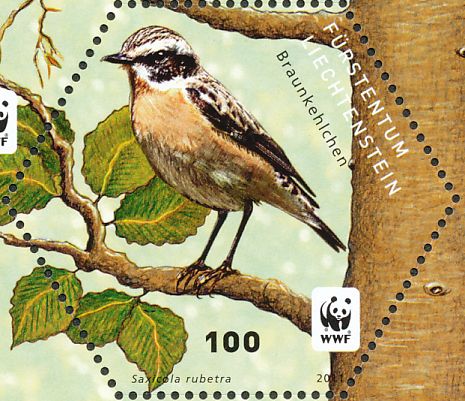Some birds pop up when you least expect it. On August bank holiday I went for a walk to my coastal patch, along with assorted relatives and a very boisterous dog. Bird-wise, apart from a high-tide roost of a thousand redshanks along the river Brue, things were relatively uneventful. But as we were strolling back to the car, a small bird flew up onto a protruding twig along a hedgerow, and posed in a way that made its identity virtually certain. A glance through my binoculars confirmed that it was indeed a whinchat (Saxicola rubetra). No other British bird has quite such a military bearing: perched upright like a colonel on parade, with its slender figure and creamy eyestripe setting it apart from its cousin the stonechat. My very first Somerset whinchats appeared a year or so after we moved down here. No fewer than ten whinchats; five perched on bales of hay, and the others on the reeds along the rhynes – the narrow water-filled ditches that form field boundaries on the Somerset Levels. Why they were all concentrated in this one place was obvious: the surrounding fields had been cut for silage several months’ earlier, leaving just short grass. Short grass means far fewer insects, the vital energy supply for all migrants as they prepare to leave our shores for the long flight to Africa. Haymaking – partly because it occurs later in the season, and partly because the bales are left on the land rather than being wrapped up in black plastic like giant rabbit droppings – is better for insects, and so far better for the wheatears and whinchats. It was only later that I discovered that whinchats used to nest in good numbers on the Somerset Levels – until as recently as the 1980s there were as many as 150 breeding pairs here. Yet now there are none. It’s a stark reminder that, while we seem to be able to create the right habitat for wetland birds, we still struggle with those species that need wildlife-friendly farming to thrive.
Source: The Guardian, 18 September 2016
https://www.theguardian.com/environment/2016/sep/18/whinchat-decline-lo…

- Login om te reageren
